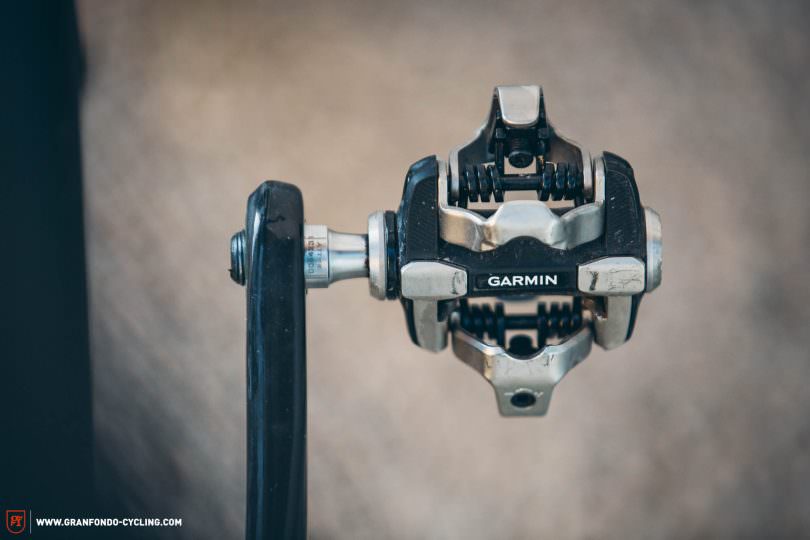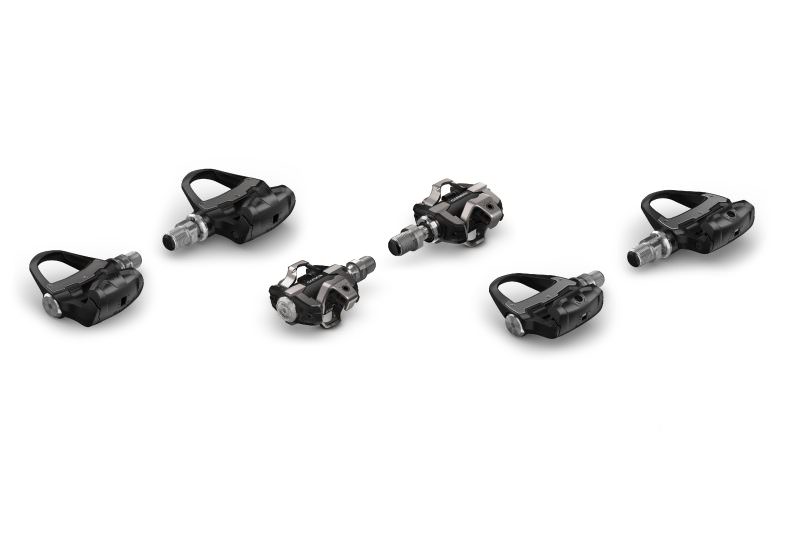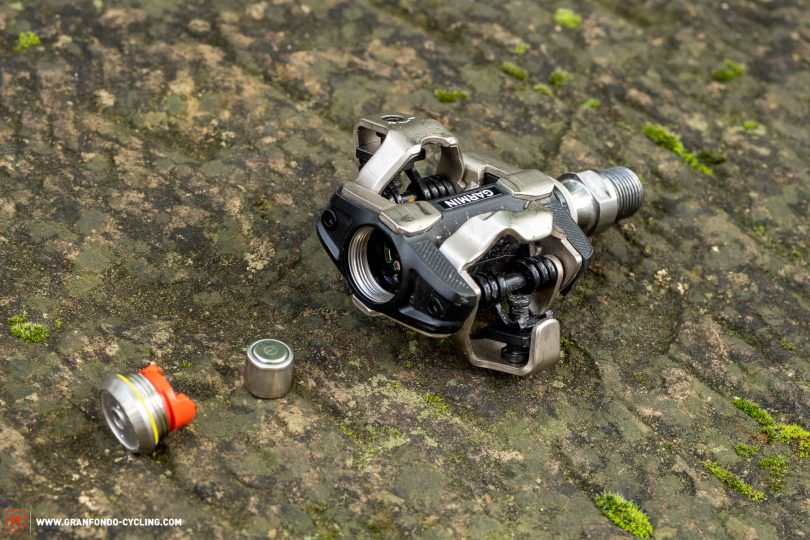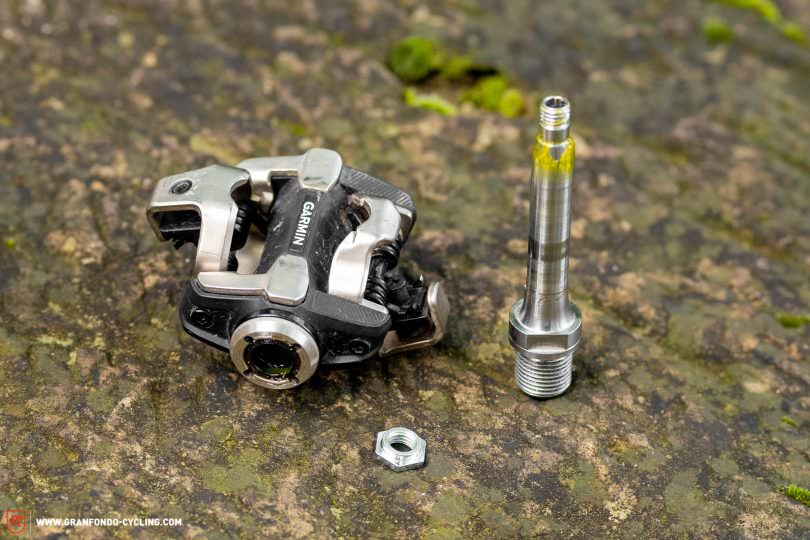Garmin Rally XC200 power meter pedals long-term review
With the new Rally power meter pedals, Garmin want to offer a power meter system to suit all data-focused athletes. We’ve tested the off-road-focused Garmin Rally XC200 pedals on a selection of gravel bikes and numerous routes to be able to tell you whether this system is the right one for you.

With the Rally power meter collection, Garmin aren’t just launching the direct successor to the Vector 3 pedals but six options at once, causing plenty of potential confusion for anyone interested. The Rally RS power meter pedals are compatible with Shimano SPD-SL cleats, the Rally RK work with LOOK KEO cleats and the Rally XC pedals we tested are, for the first time ever, compatible with Shimano SPD cleats, giving you access to a variety of matching shoes. The Rally XC model is designed for off-road use and is also approved for mountain biking, as long as you comply with the weight limit of 105 kg. The “200” in the product designation identifies these as offering dual-sided power measurement, while the “100” version only measures power in the left pedal, with total power extrapolated accordingly. The Garmin Rally XC100 pedals are available for € 700, the dual-sided XC200 pedals we tested cost € 1200. That might seem steep, but the advantage of the Rally series is that the power meter measurement is based in the pedal axle which is identical across all models. That means that the pedal can be converted to other pedal bodies in just under 5 minutes. Garmin offer conversion kits with SPD-SL and LOOK KEO pedal bodies for € 200 each, while the SPD pedal bodies will cost you € 250. Even the Vector 3 axle is compatible with the new pedal bodies. In turn, the Garmin Rally series actually makes it feasible to use the same power meter on several bikes and different disciplines.
Swapping bodies isn’t complicated but requires, among other things, a PH00 screwdriver and a 12mm socket wrench, which aren’t part of the usual complement of bits on a multi-tool. The release strength of the cleat mechanism can be adjusted with the usual 3mm Allen key.

The Garmin Rally series is offered with SPD, SPD-SL and LOOK KEO pedal bodies. If you want to ride different systems, you need only buy one set. Garmin offer the other pedal bodies as optional conversion kits.
The Garmin Rally XC200 power meter pedals in detail
The Garmin Rally XC power meter pedals have a solid and high-quality build, which is also reflected in their high weight, with the pair weighing 441 g. The pedal body is IPX7 waterproof and made from aluminium. The cleat mechanism is steel, just like the two tread plates to minimise wear. With a stack height of 13.5 mm, the pedals are slightly thicker than ordinary SPD options. If you frequently clip your pedals, you should take extra care to avoid getting stuck on roots and rocks. The pedals can only be fitted using a 15 mm pedal wrench because the inner end of the pedal axle is missing the socket for a 6 or 8 mm Allen key you would usually find. Instead, this is where the coloured status LED is hidden. It reveals whether the pedal is pairing, receiving a software update from a smartphone or Garmin Edge bike computer, or whether the CR1/3N button cell is running low. Compared to competitors like Favero, Garmin rely on non-rechargeable batteries, which has both advantages and disadvantages: the battery has a long runtime of 120 hours (according to the manufacturer) and doesn’t require an additional charging socket in the pedal body, which is already packed full of technology. If the power does run out on the road, it can be easily replaced by opening the battery cover on the outside of the pedal with a 4 mm Allen key. The disadvantage is that you’ll always have to keep an eye on the battery level rather than simply hooking the pedals up to charge after every ride. At least the battery cap and its thread are now metal, allowing it to stand up to frequent battery changes without damage, a weak point on the first generations of Vector 3 pedals.

The battery cap used a delicate plastic thread in the previous Vector pedals. With the Rally series, Garmin use metal instead. If you can’t get a CR1/3N battery, two LR44/SR44 button cells stacked on top of each other also work.
Power meter 2.0 – The digital world of the Garmin Rally XC200 power meter
After initial installation, the pedals have to be set up once either via your bike computer or the Garmin Connect app. In addition to ANT+, the Rally pedals also offer Bluetooth connectivity. If your paired bike computer doesn’t have the option of specifying crank length, this has to be done via the Garmin Connect app on the smartphone, triggering a short calibration where you should have no load on the pedals. Garmin recommend doing several sprints after initial installation and to perform the calibration then, as well as before every ride, to get the most accurate measurements. If there is a large temperature difference between where you keep the bike and outside, you should give the pedals time to acclimatise before initialising the calibration. The pedals work with most bike computers such as from competitors like Wahoo or the Zwift app on your smartphone. However, you’ll only get the full scope of features and the most enjoyable user experience with a Garmin Edge computer, where the ANT+ connection transmits the additional data displayed in the “Cycling Dynamics” page on a Garmin Edge bike computer. In addition to standard values such as power and cadence, you get information about the imbalance between left and right leg, the platform center offset indicating where you apply force on the pedal relative to the centre of the pedal body and information about power phases during crank rotation – a friendly reminder that you should pedal round strokes and not leave your feet lazily on the pedals. Your Garmin Edge, the Garmin Connect app or the Garmin online portal can also display the spent standing and time spent in the saddle, with all data displayed graphically. However, Cycling Dynamics data is only available for the dual-sided 200 Rally models.

The pedal body just contains the battery and connects the rider to the bike. Sensors and antennae are integrated into the axle. The axle can be removed in just a few steps and used in any of Garmin’s compatible pedal bodies.
Garmin Rally XC power meter long-term review
We tested the Garmin Rally XC power meter pedals on different gravel and mountain bikes and compared them to the measurements of the power meter in the motor of an E-gravel bike, whose values will be minimally affected by vibrations caused by bumps in the road. In comparison, the Garmin Rally XC power meter delivers slightly higher numbers, which is hardly surprising as the pedals measure closer to the point of force input and do not have to factor in power losses such as those caused by flex in the cranks. More importantly, they deliver consistent and plausible values during every ride without perceptible drift, without any power peaks or measurement dropouts and without being affected by bumps in the road. The absolute number isn’t as important as having a consistent value to measure your own progress and this is where the Garmin Rally XC series can shine. They are particularly well-suited to bikers who want to use power meters in a versatile way across several bikes and on uneven trails. The SPD mechanism works intuitively even for inexperienced bikers and the tread plates provide a stable platform. The many measurements provided by the Cycling Dynamics functionality are a nice extra, but won’t provide any significant insight for most riders. Meanwhile, the thick pedal body and high weight of the pedal could deter performance-oriented bikers. The Rally XC pedals are also less-suited to live measurement of short sprints over the next hill. Up to 3 seconds pass before any power increase is registered on the Garmin Edge.

The coloured status LEDs identify whether the pedals are in pairing mode or if the battery is getting low. We would have liked a charge level indicator on the Garmin Edge but it is missing here.

The pedal axle protrudes slightly on the SRAM Force carbon cranks of our test bike. It’s important not to forget the washer when fitting the pedals.
Garmin Rally XC200 conclusion
The Garmin Rally XC 200 power meter pedals are particularly suited to ambitious athletes who want to track and compare their performance across several bikes and who regularly leave the beaten track. Due to the easy swap between pedal bodies, the power meter offers a wide range of applications from road to gravel to mountain bike, which also justifies their high price. For hobby-oriented bikers who are less performance focussed, there are cheaper alternatives on the market.
Tops
- precise measurement
- replaceable pedal bodies
- detailed data logging for enthusiasts
- large selection of matching shoes thanks to wide compatibility
- good quality
Flops
- high weight and design
- delayed display of power during sprints
- expensive
- conversion of the pedal body requires special tools
Tester: Ben & Rudi
Test duration: 3 months
Price: € 1,199.99
Weight: 441 g
Pedal system: Shimano SPD
Area of use: gravel, cross country
You can find more information about the Garmin Rally XC200 power meter pedals at garmin.com
Did you enjoy this article? If so, we would be stoked if you decide to support us with a monthly contribution. By becoming a supporter of GRAN FONDO, you will help secure a sustainable future for high-quality cycling journalism. Click here to learn more.
Words: Rudolf Fischer Photos: Benjamin Topf, Rudolf Fischer






